


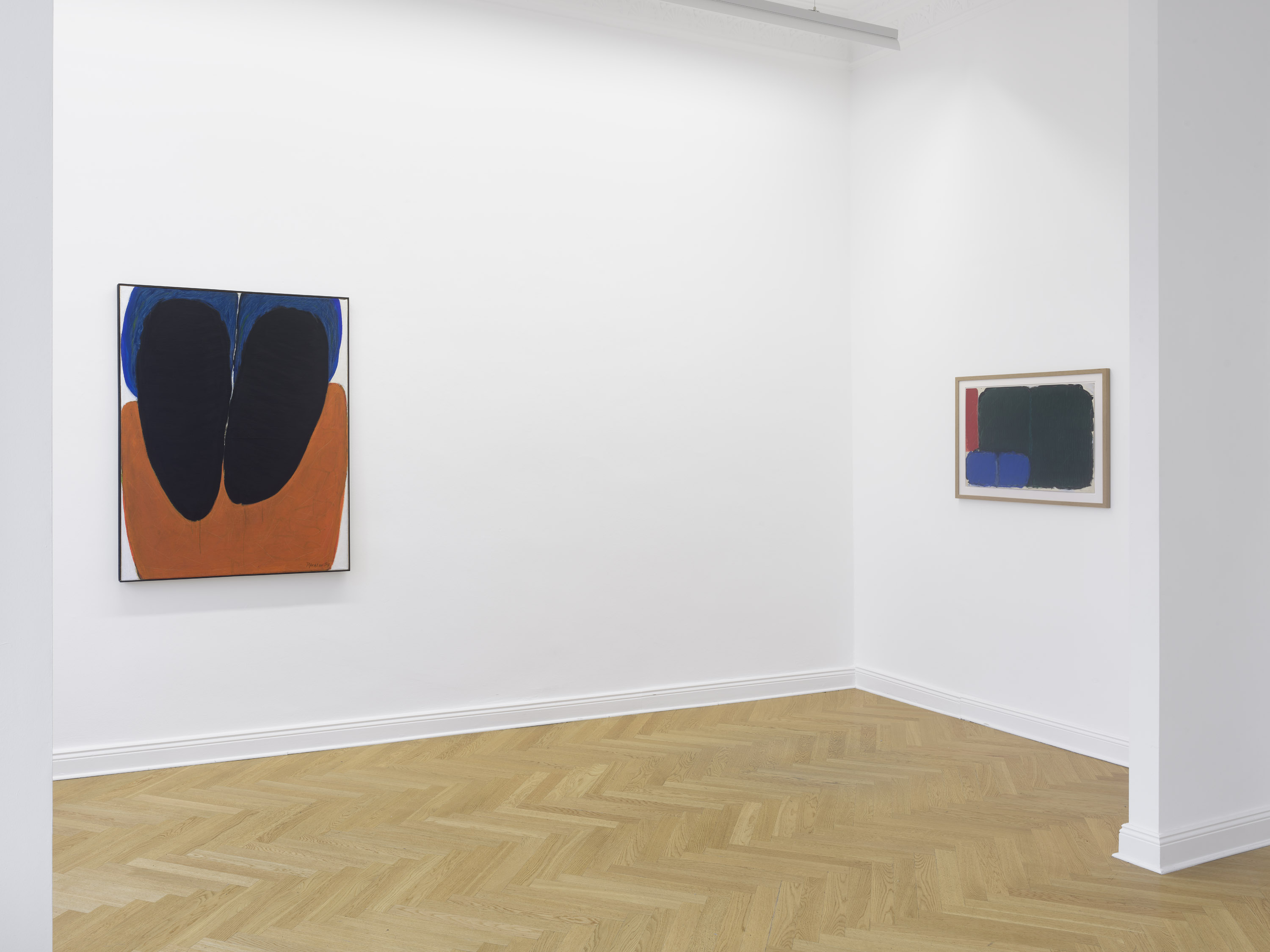
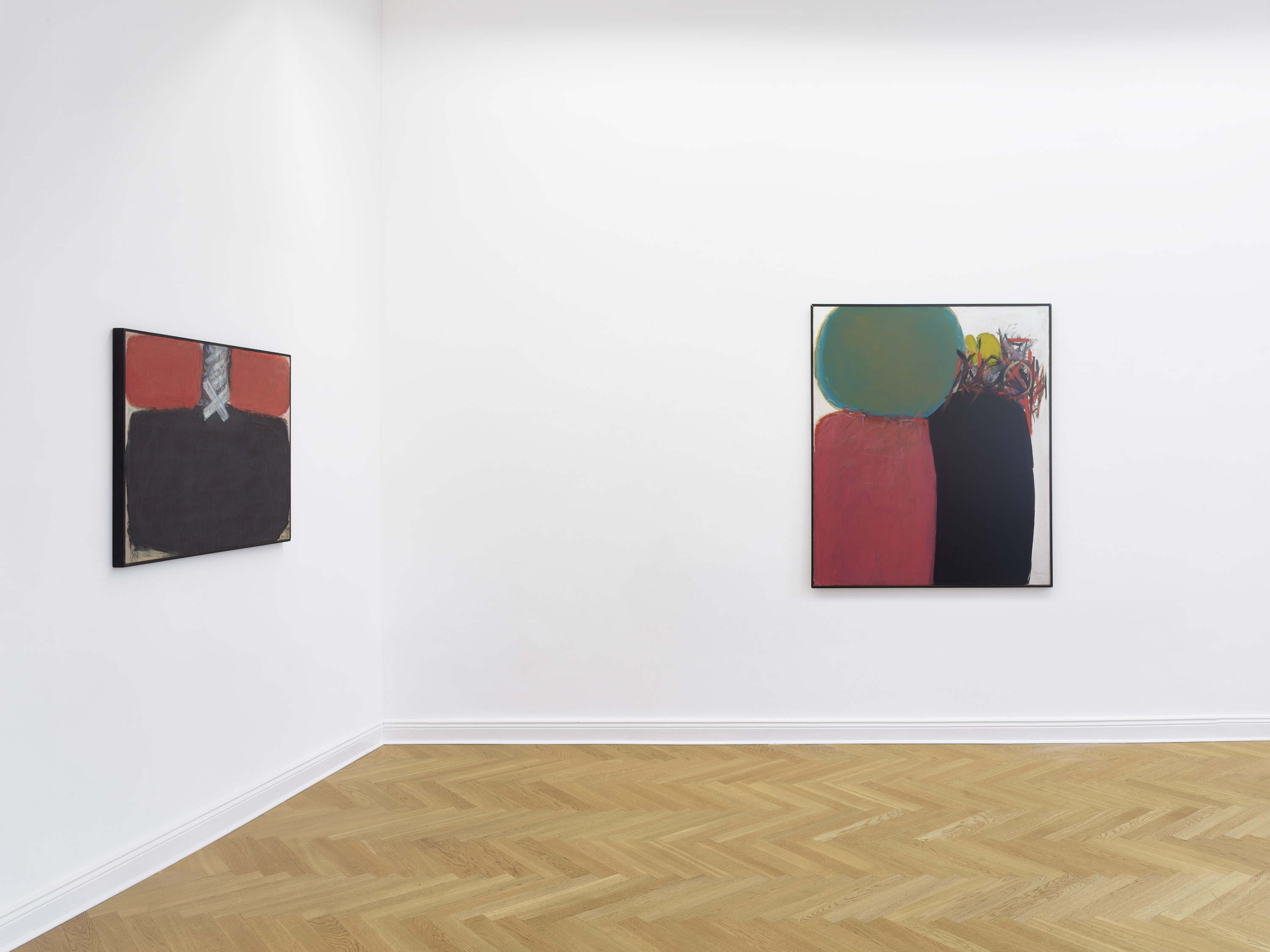
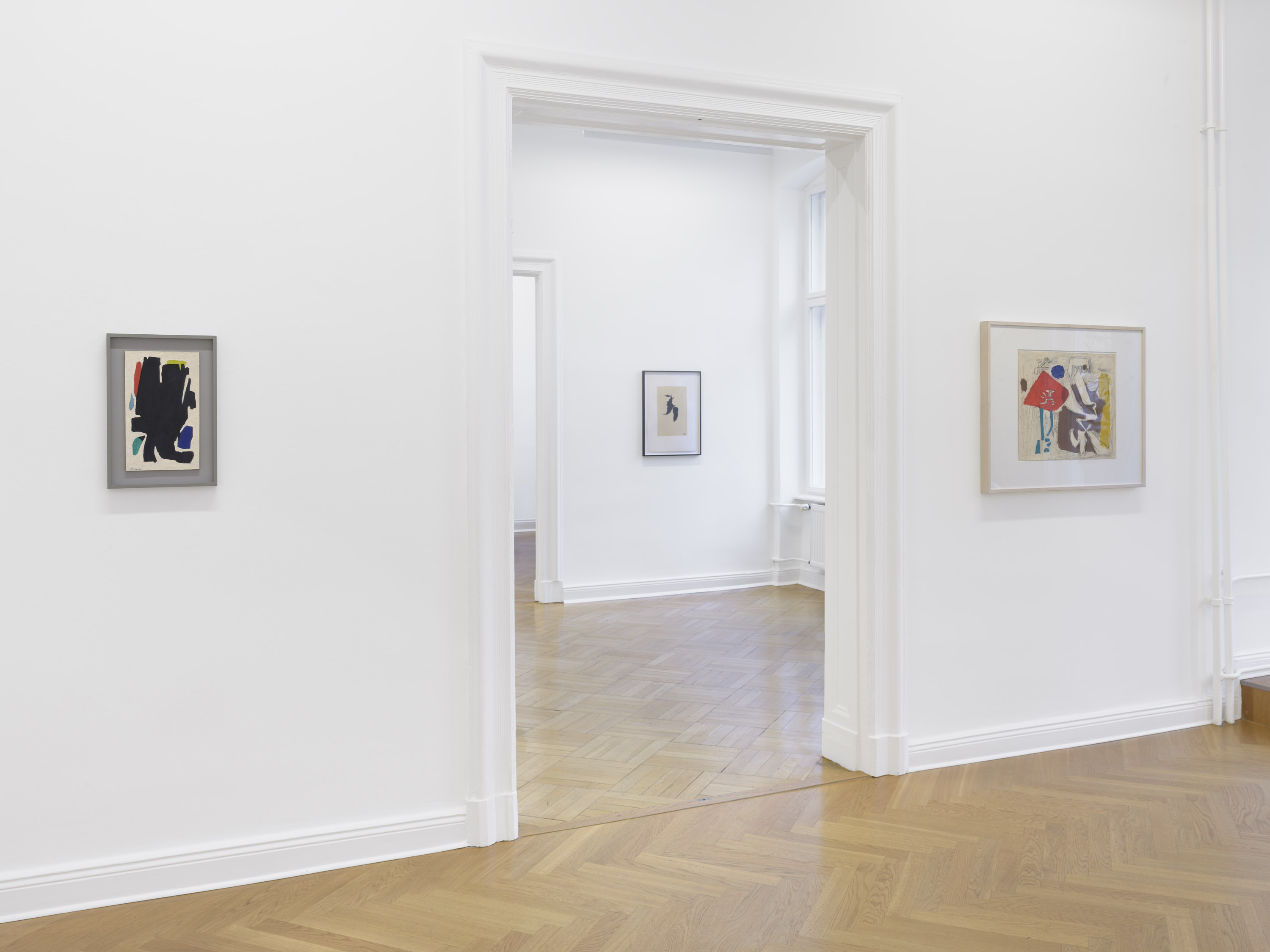

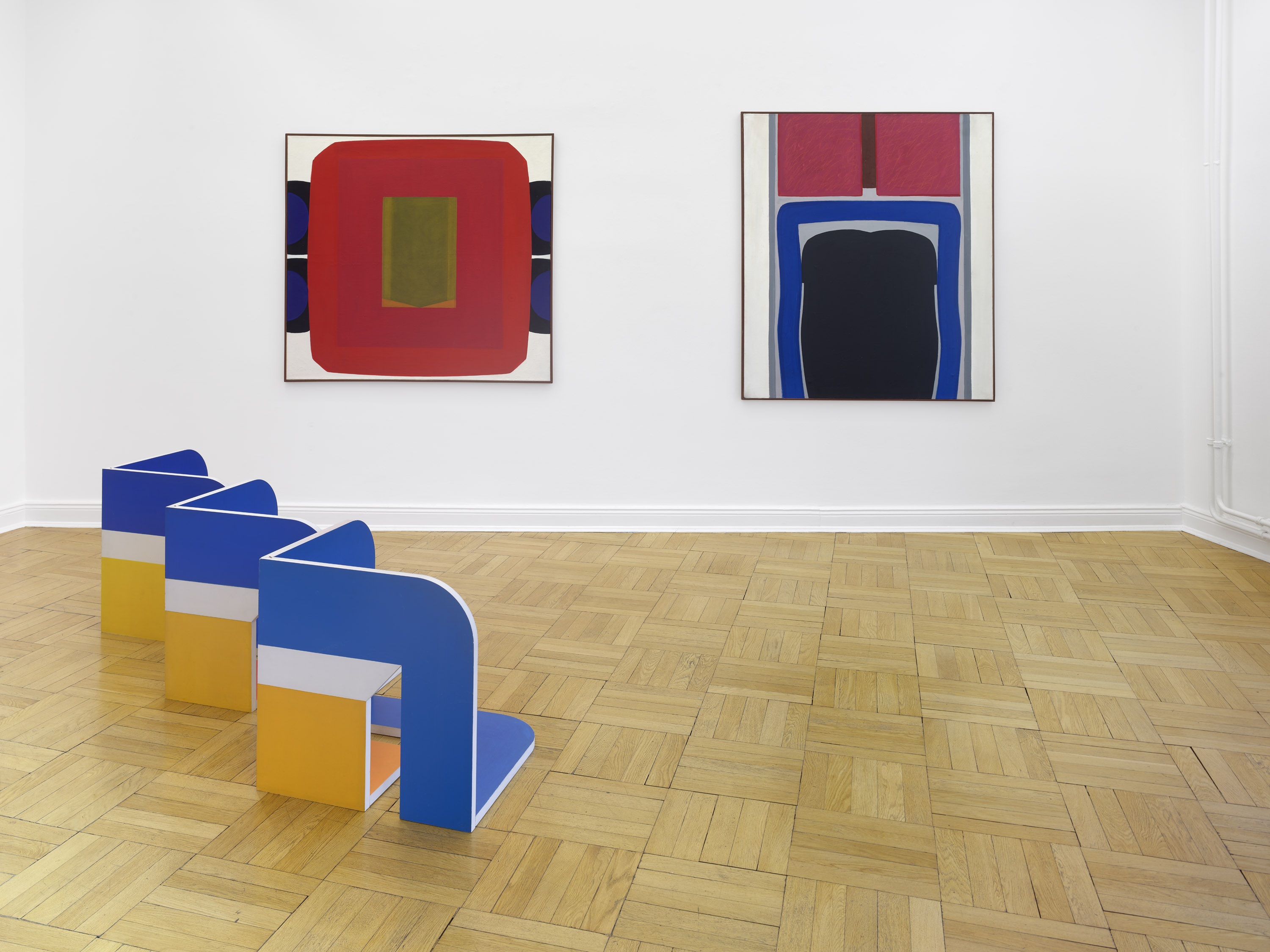
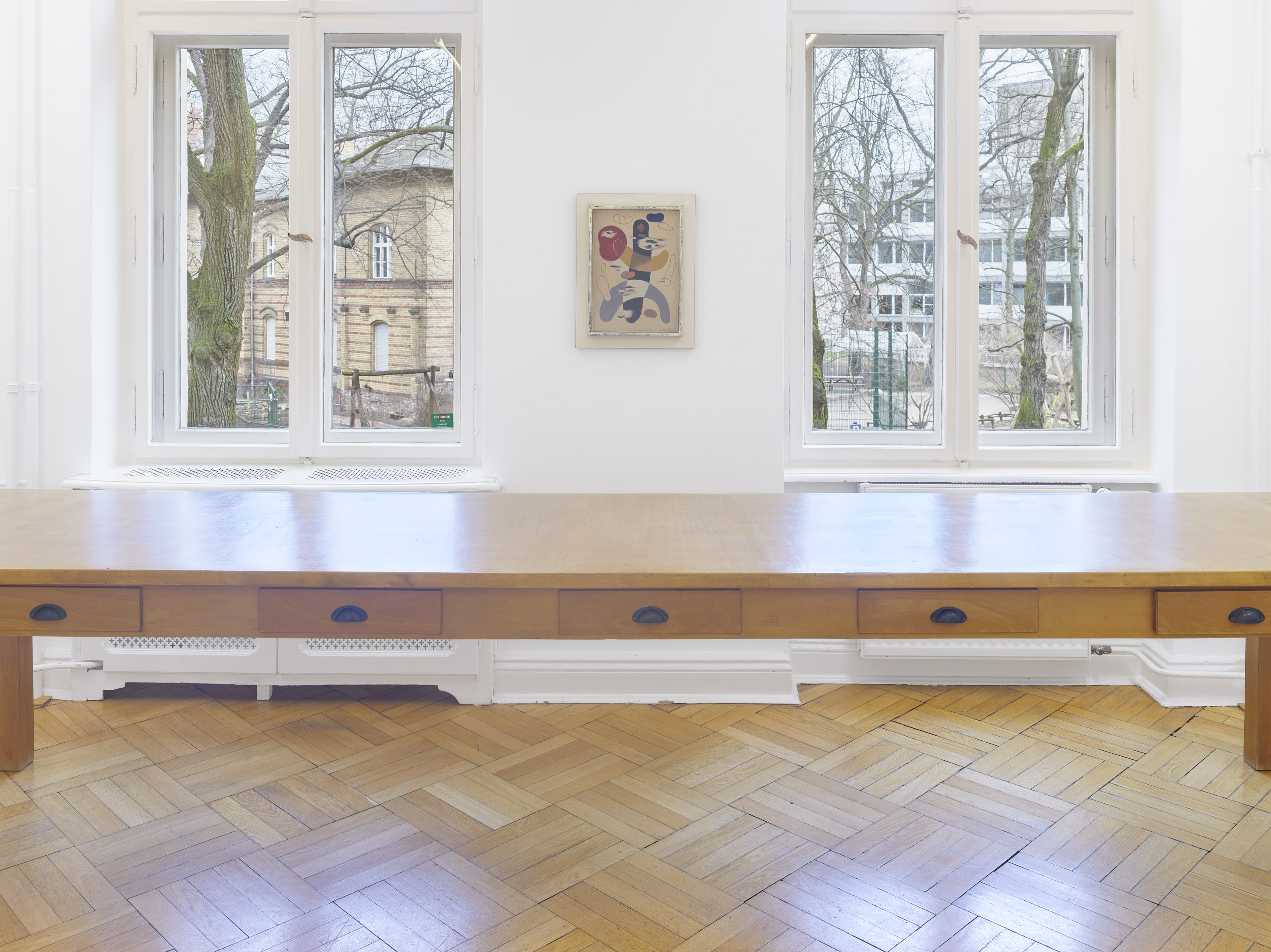
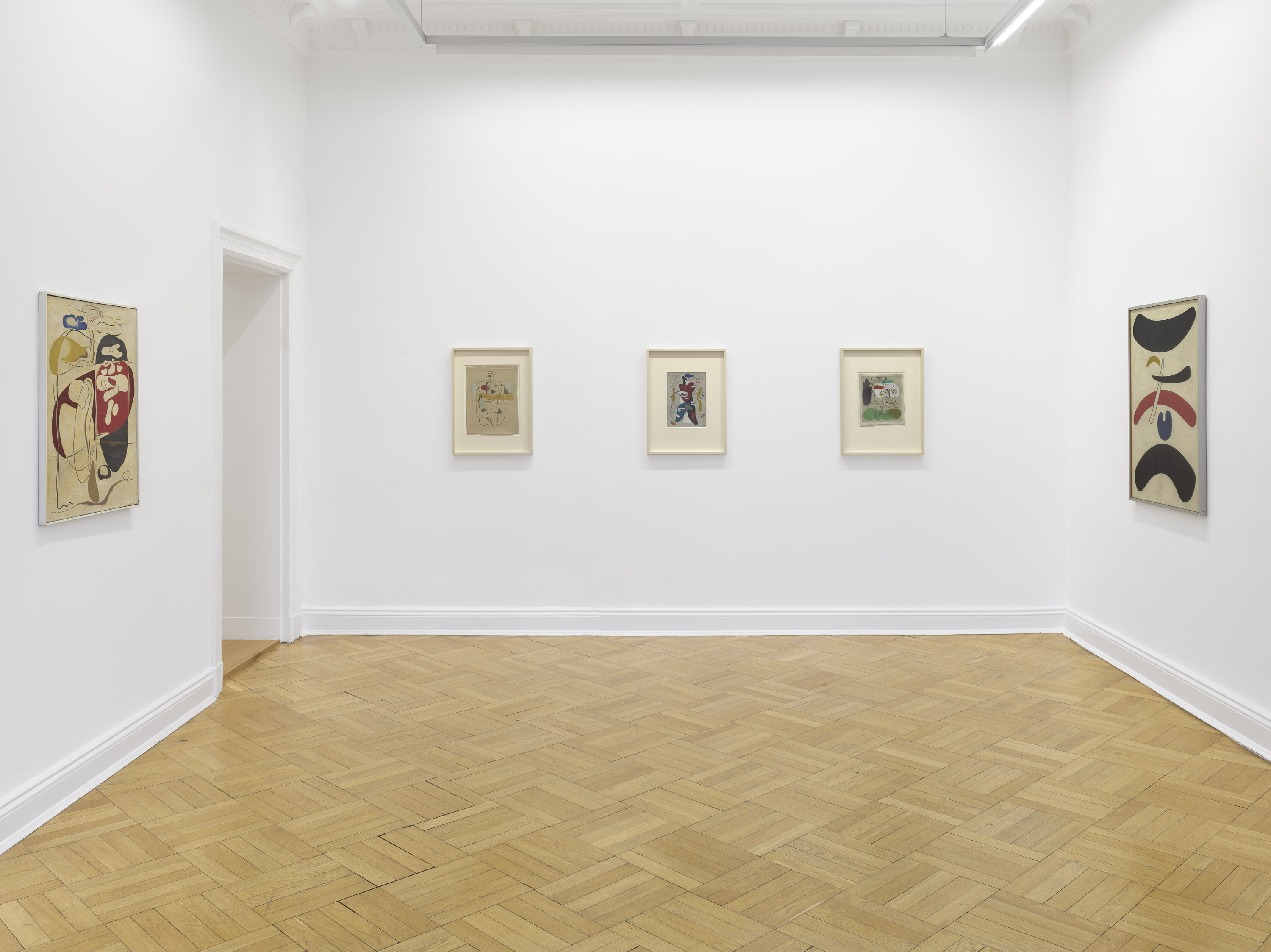
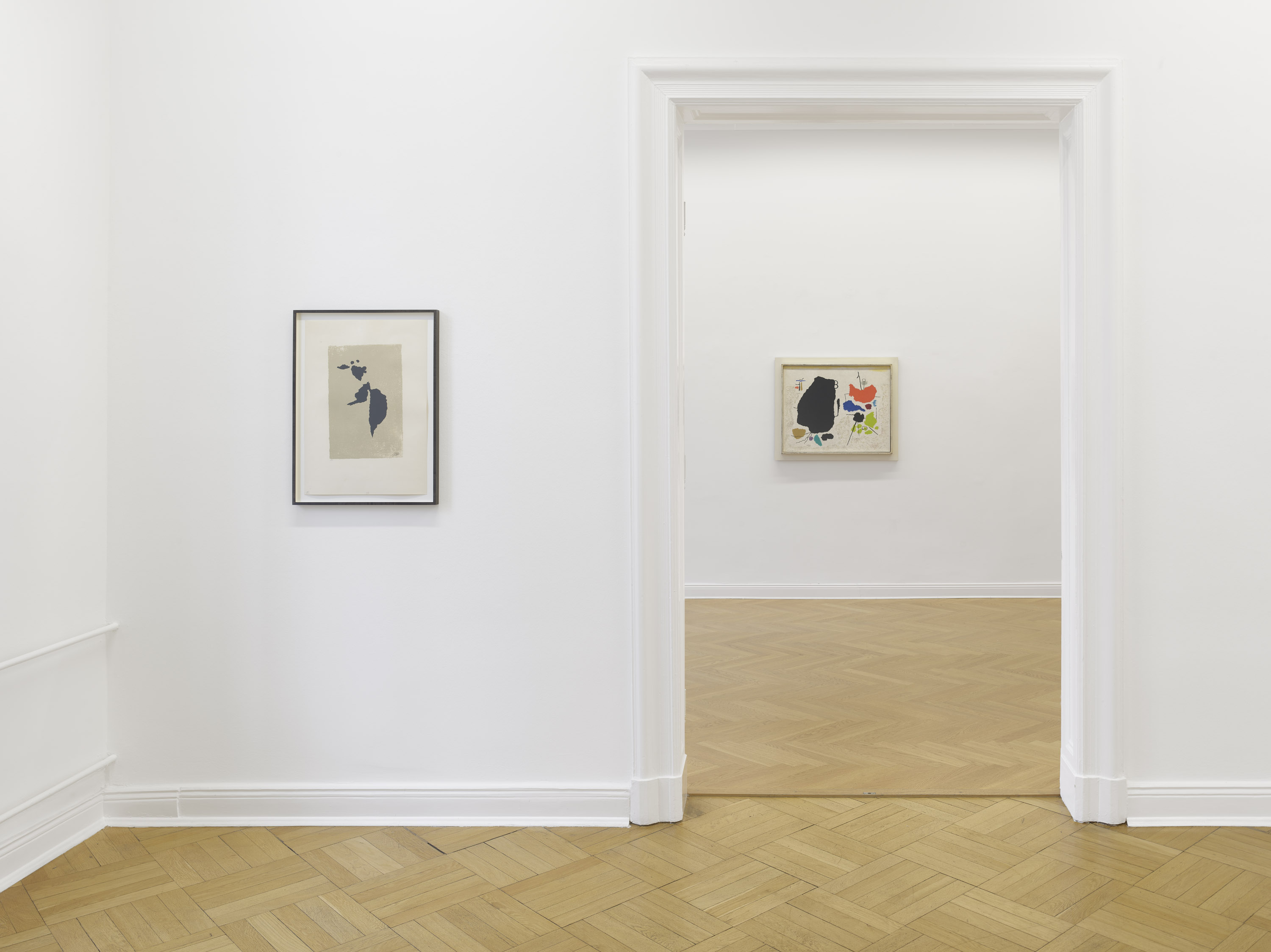
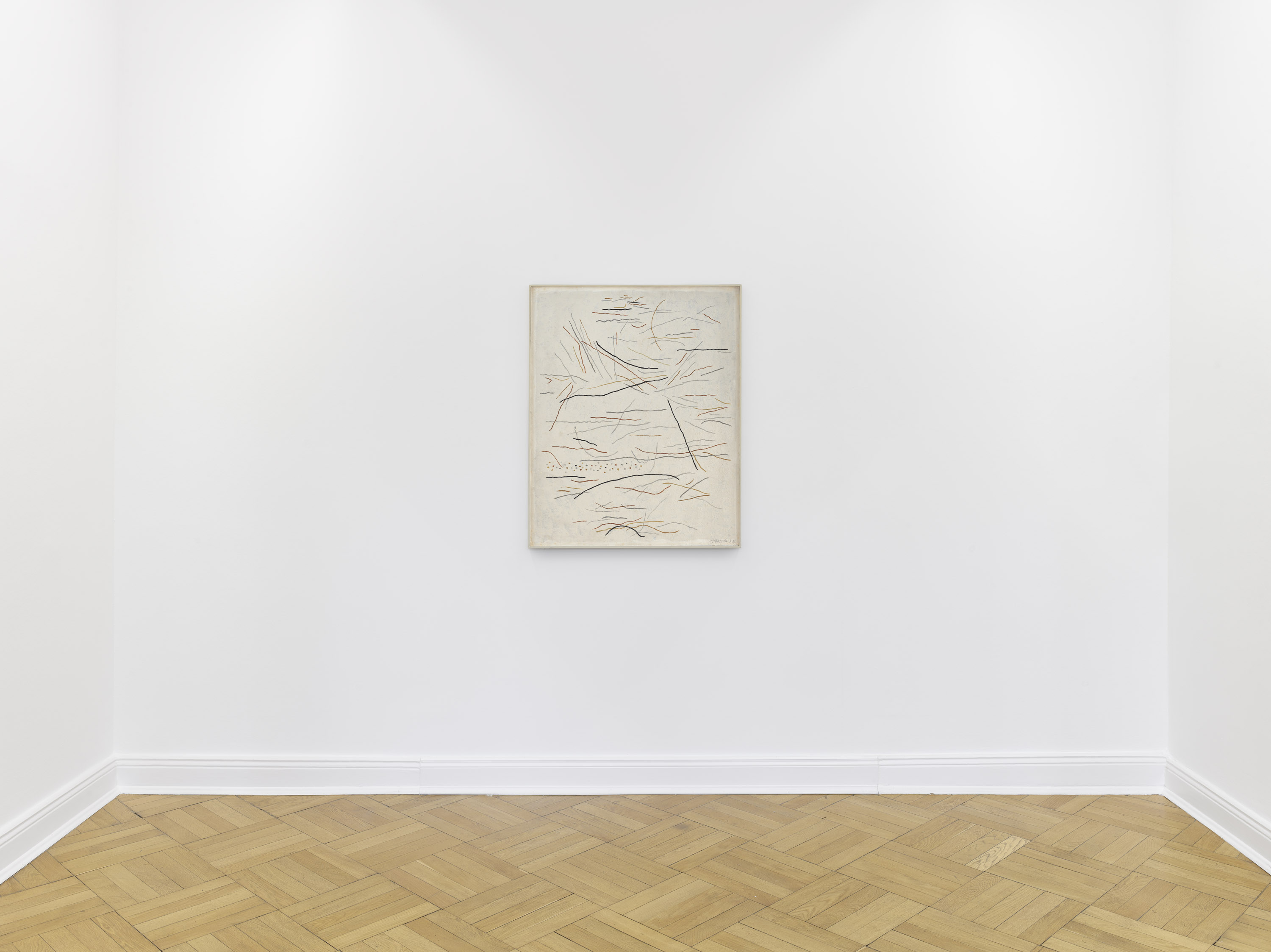
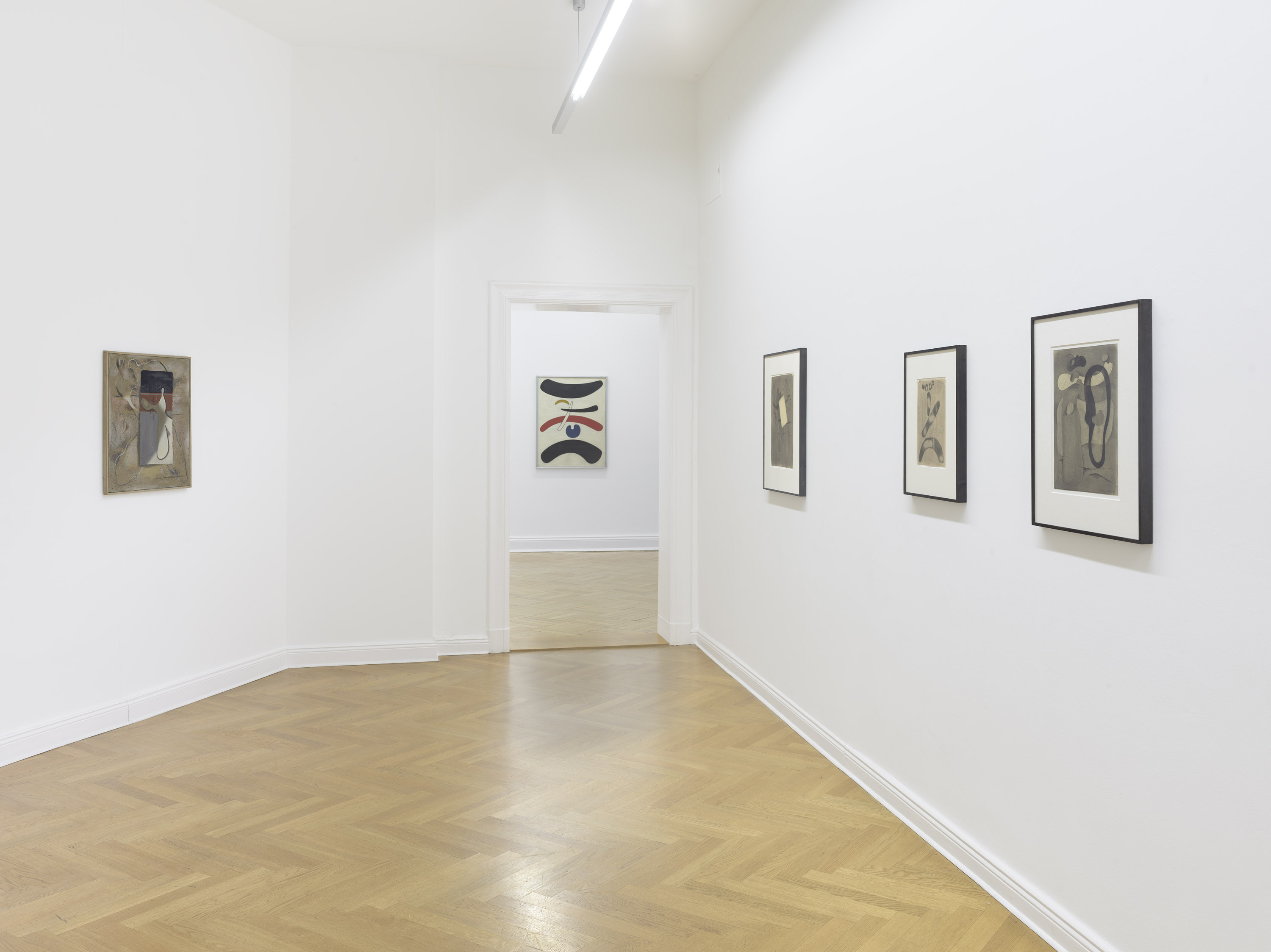
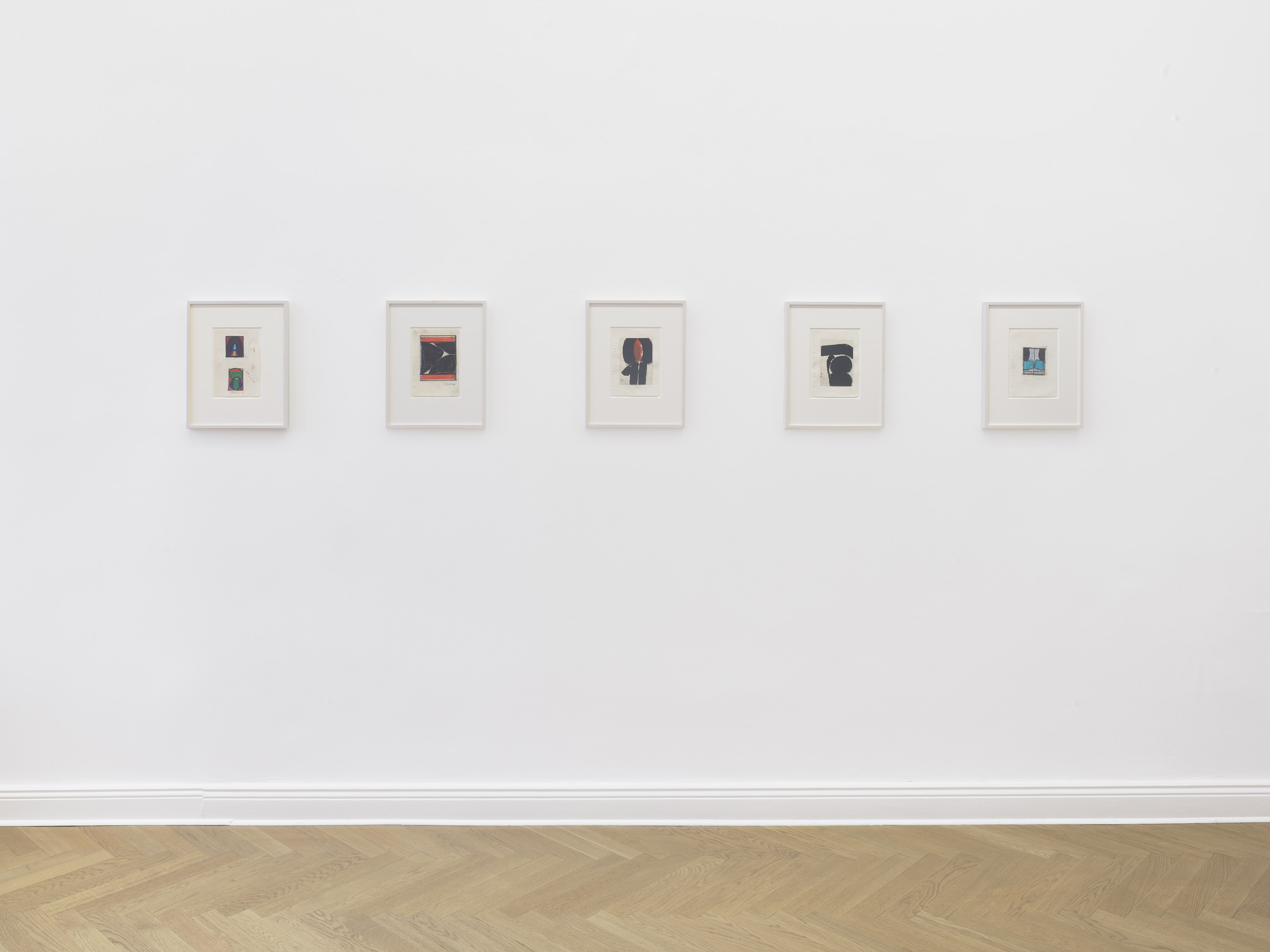
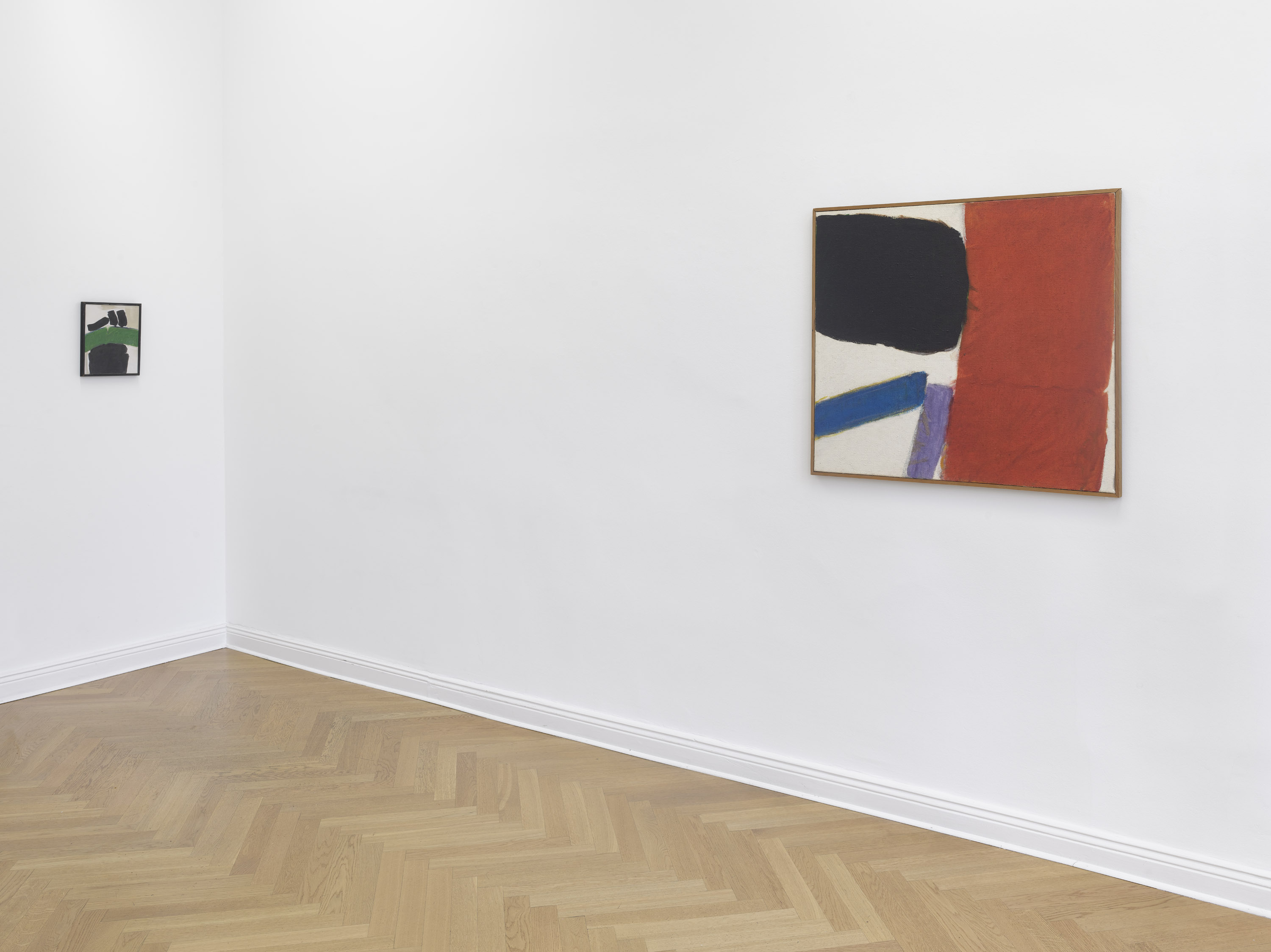
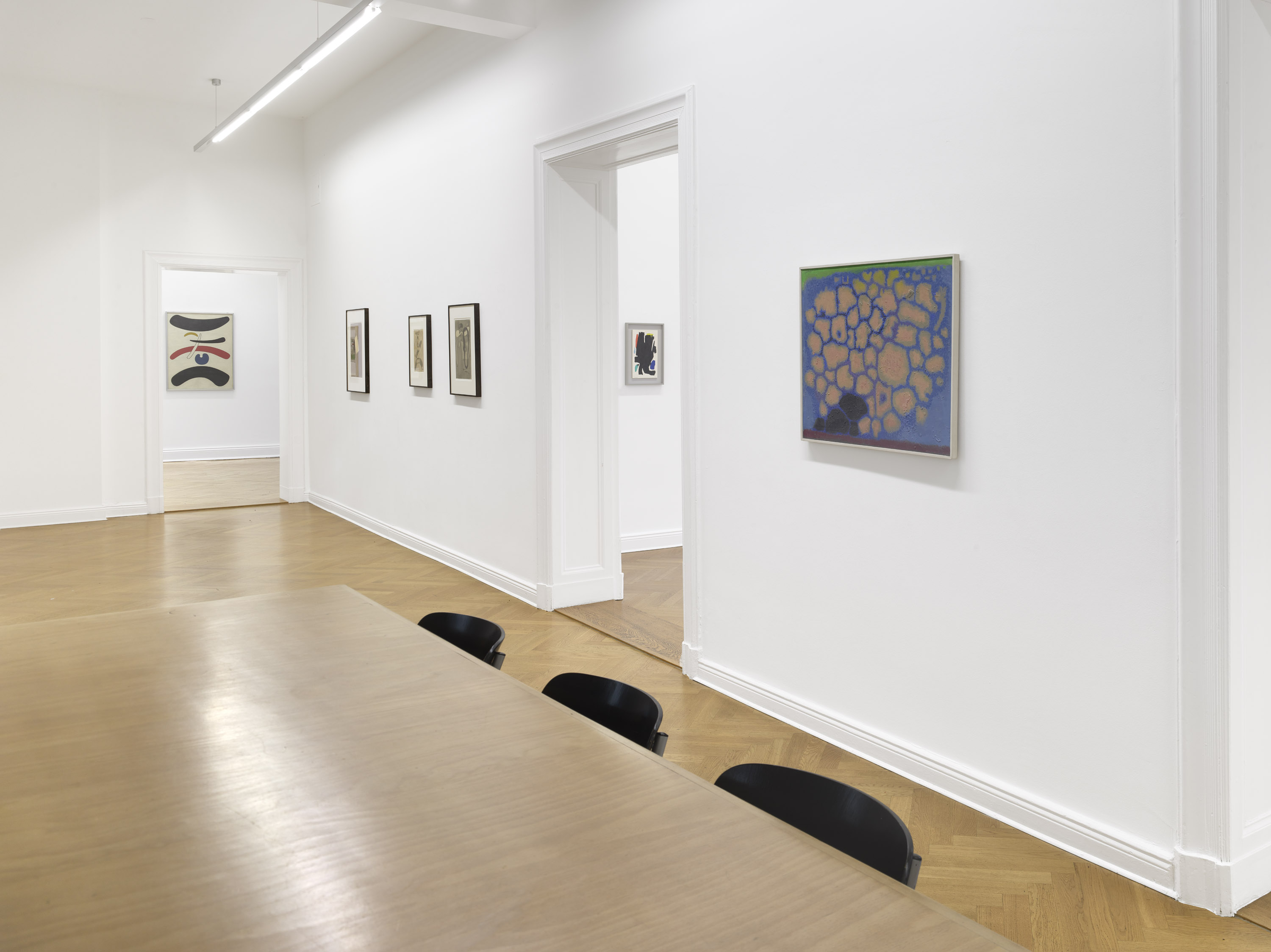
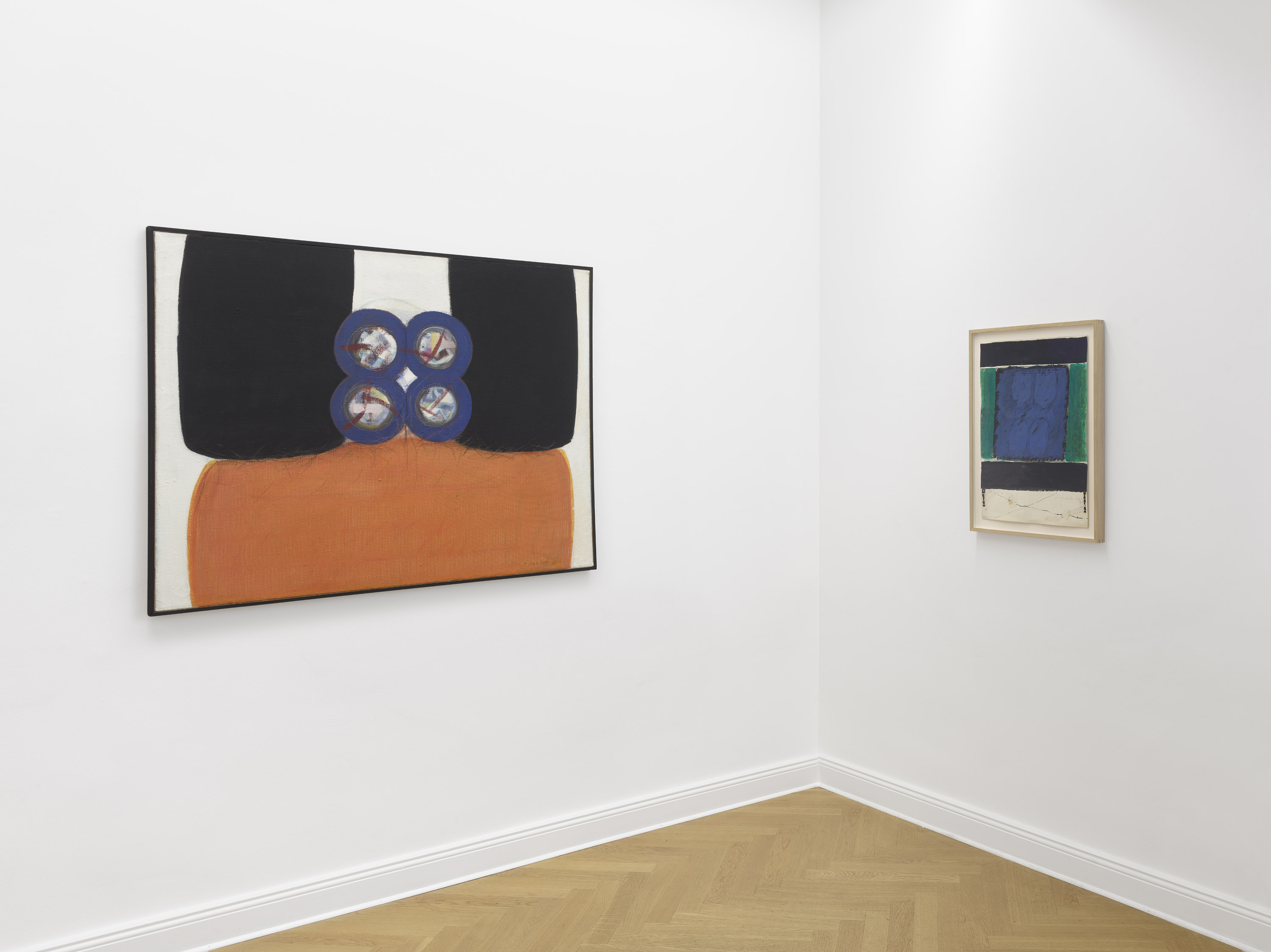
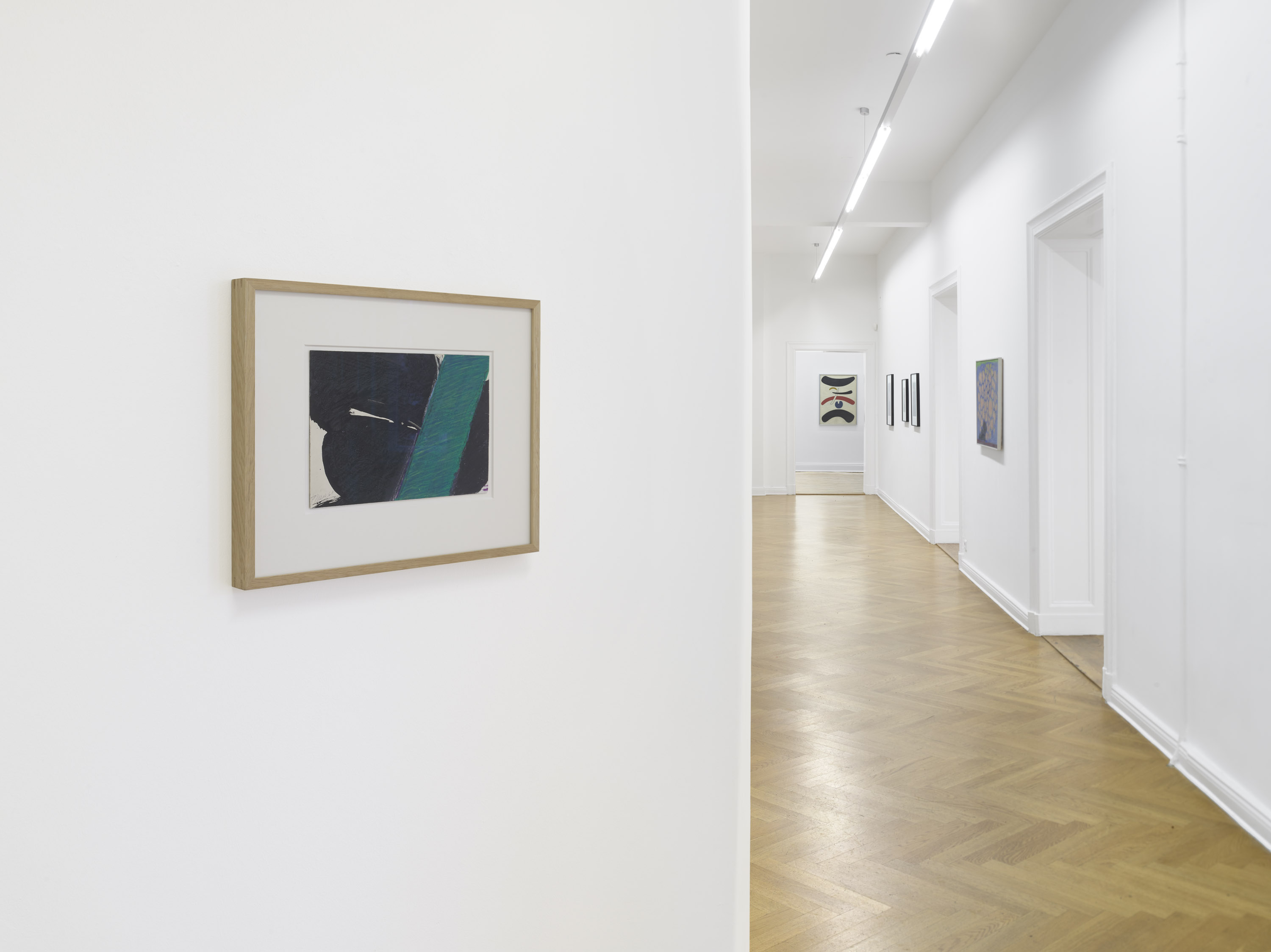
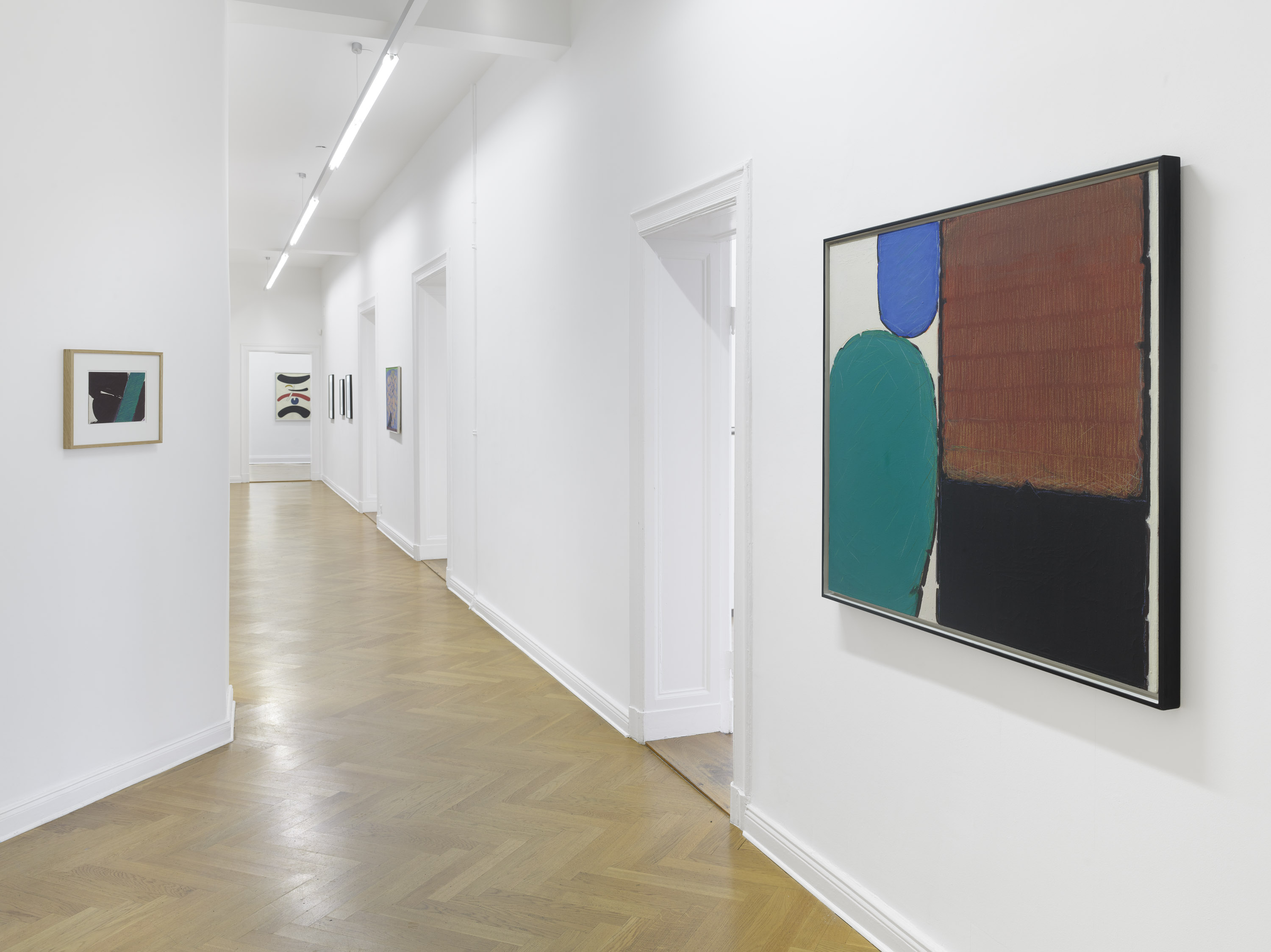
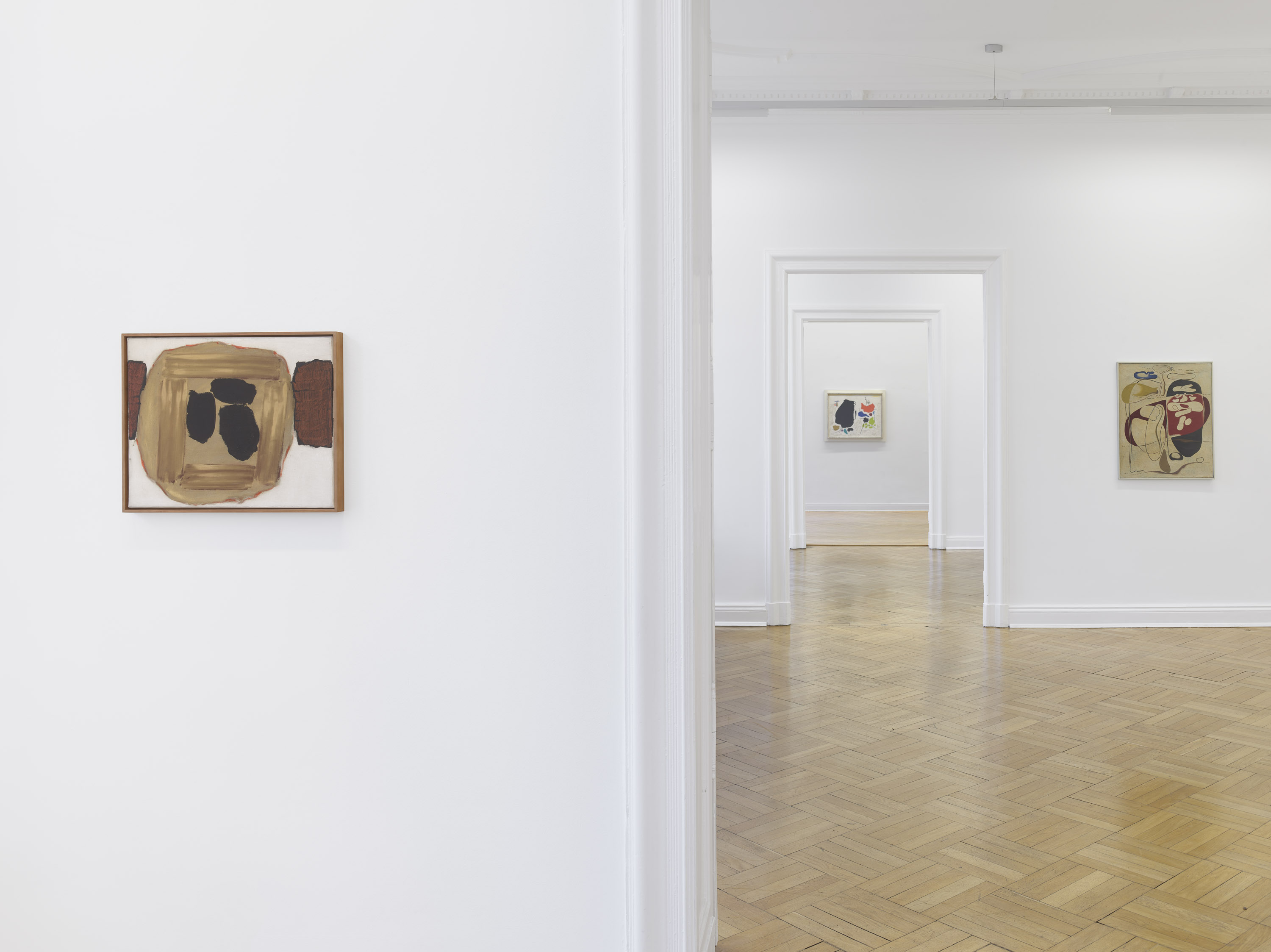
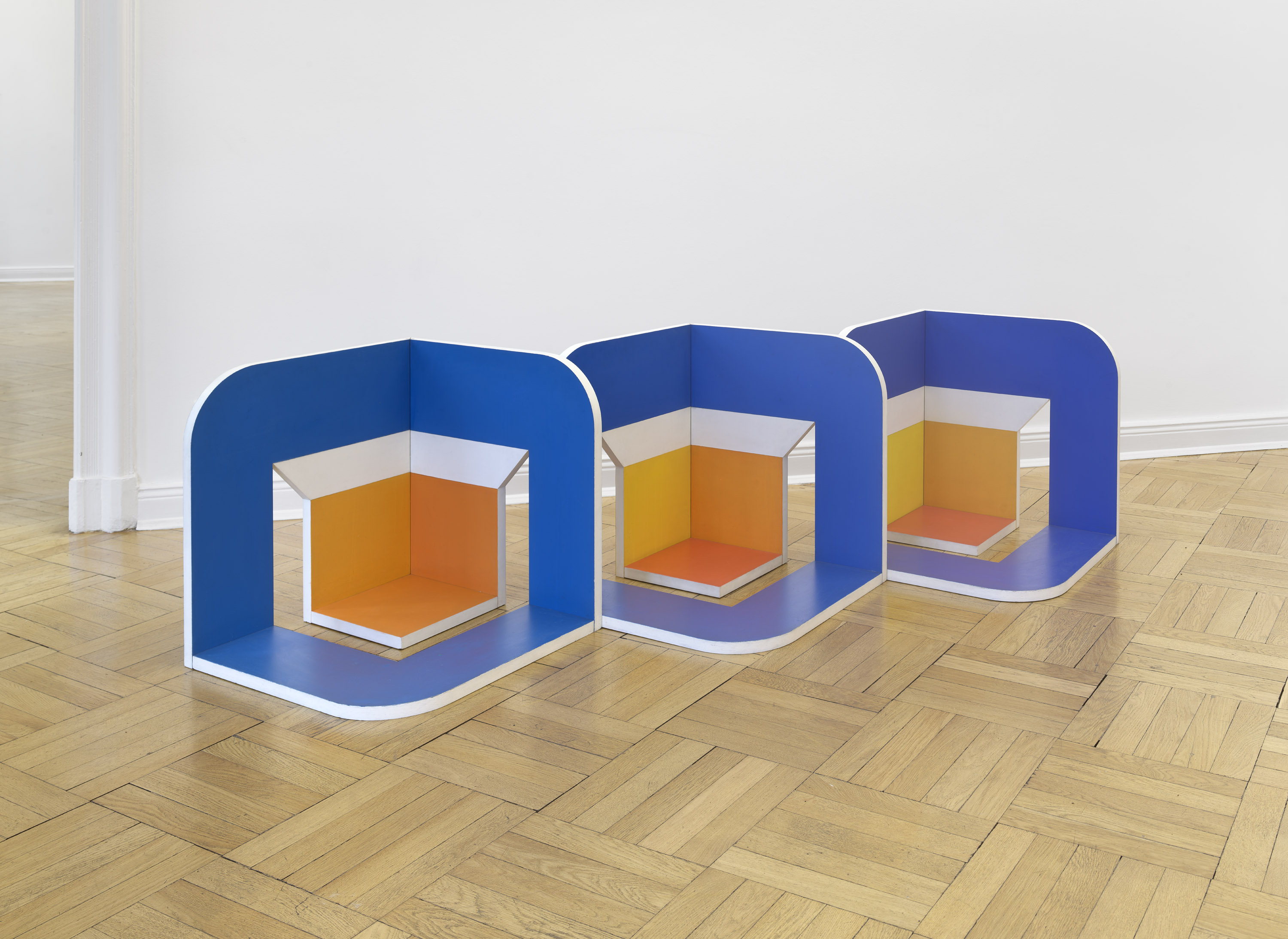
ENCOUNTER OF TWO ARTISTS IN THE 1950S
Willi Baumeister & Georg Karl Pfahler
10. February – 13. April 2024
Willi Baumeister's (1889-1955) work reflects the history of European art in the first half of the 20th century: from abstraction - in Baumeister's work based on the human figure - through a non-objective, organic period, to the exploration of a formation of form that takes place within the work and constantly explores the boundaries of the figurative anew.
As important as his work, however, is Baumeister's legacy as a teacher: he initially lectured at the Städtische Kunstgewerbeschule in Frankfurt from 1928 until he was forced out by the National Socialists in 1933. In 1946, Baumeister, who worked undercover during the war years and earned his living as a commercial artist, was nominated professor at the newly reopened Kunstakademie Stuttgart by the Minister of Culture at the time, Theodor Heuss.
He was the emblematic figure for the new beginning of the Kunstakademie, integrated the principles of the Bauhaus into his classes and advocated the morally based freedom of art. His programmatic essay "Das Unbekannte in der Kunst", published in 1947, and his position at Darmstädter Gesprächen in 1950 further established his reputation as an advocate of abstraction in Germany.
Georg Karl Pfahler (1926-2002) also met Baumeister at the Stuttgart Art Academy and studied in his class until 1954. Pfahler's early works show the influence of his teacher and his late work of black floating forms. But Pfahler soon found his own cosmos. In 1958, he began his extensive group of works "Formativ", which was to serve as the basis and conceptual source for his entire later oeuvre: painterly compositions of color blocks and fields that explore the relationship between color and form in sensitive acts of balance.
Today, Pfahler is best known for his later, geometric color compositions with sharp outlines, which shaped his reputation as the main representative of hard-edge painting in Europe. From the very beginning, he was not only interested in the dynamics within the pictorial space, but also in the relationship of his paintings to the surrounding space. In doing so, he pursued a larger, social concern: to create social spaces with art. From 1965 onwards, he created architectural "color space objects" in interior and exterior spaces, such as the walk-in color spaces in the German Pavilion at the 1970 Venice Biennale and his "palaver houses". This dimension of Pfahler's art also makes him appear today as a pioneer of later art trends interested in social interaction, such as "Relational Art".


















ENCOUNTER OF TWO ARTISTS IN THE 1950S
Willi Baumeister & Georg Karl Pfahler
10. February – 13. April 2024
Willi Baumeister's (1889-1955) work reflects the history of European art in the first half of the 20th century: from abstraction - in Baumeister's work based on the human figure - through a non-objective, organic period, to the exploration of a formation of form that takes place within the work and constantly explores the boundaries of the figurative anew.
As important as his work, however, is Baumeister's legacy as a teacher: he initially lectured at the Städtische Kunstgewerbeschule in Frankfurt from 1928 until he was forced out by the National Socialists in 1933. In 1946, Baumeister, who worked undercover during the war years and earned his living as a commercial artist, was nominated professor at the newly reopened Kunstakademie Stuttgart by the Minister of Culture at the time, Theodor Heuss.
He was the emblematic figure for the new beginning of the Kunstakademie, integrated the principles of the Bauhaus into his classes and advocated the morally based freedom of art. His programmatic essay "Das Unbekannte in der Kunst", published in 1947, and his position at Darmstädter Gesprächen in 1950 further established his reputation as an advocate of abstraction in Germany.
Georg Karl Pfahler (1926-2002) also met Baumeister at the Stuttgart Art Academy and studied in his class until 1954. Pfahler's early works show the influence of his teacher and his late work of black floating forms. But Pfahler soon found his own cosmos. In 1958, he began his extensive group of works "Formativ", which was to serve as the basis and conceptual source for his entire later oeuvre: painterly compositions of color blocks and fields that explore the relationship between color and form in sensitive acts of balance.
Today, Pfahler is best known for his later, geometric color compositions with sharp outlines, which shaped his reputation as the main representative of hard-edge painting in Europe. From the very beginning, he was not only interested in the dynamics within the pictorial space, but also in the relationship of his paintings to the surrounding space. In doing so, he pursued a larger, social concern: to create social spaces with art. From 1965 onwards, he created architectural "color space objects" in interior and exterior spaces, such as the walk-in color spaces in the German Pavilion at the 1970 Venice Biennale and his "palaver houses". This dimension of Pfahler's art also makes him appear today as a pioneer of later art trends interested in social interaction, such as "Relational Art".
Tue–Fri 11 am – 6 pm, Sat 12–4 pm
Meierottostraße 1
10719 Berlin
T +49 30 88 71 13 71
mail@galeriefriese.de
www.galeriefriese.de
Tue–Fri 11 am – 6 pm, Sat 12–4 pm
Meierottostraße 1
10719 Berlin
T +49 30 88 71 13 71
mail@galeriefriese.de
www.galeriefriese.de